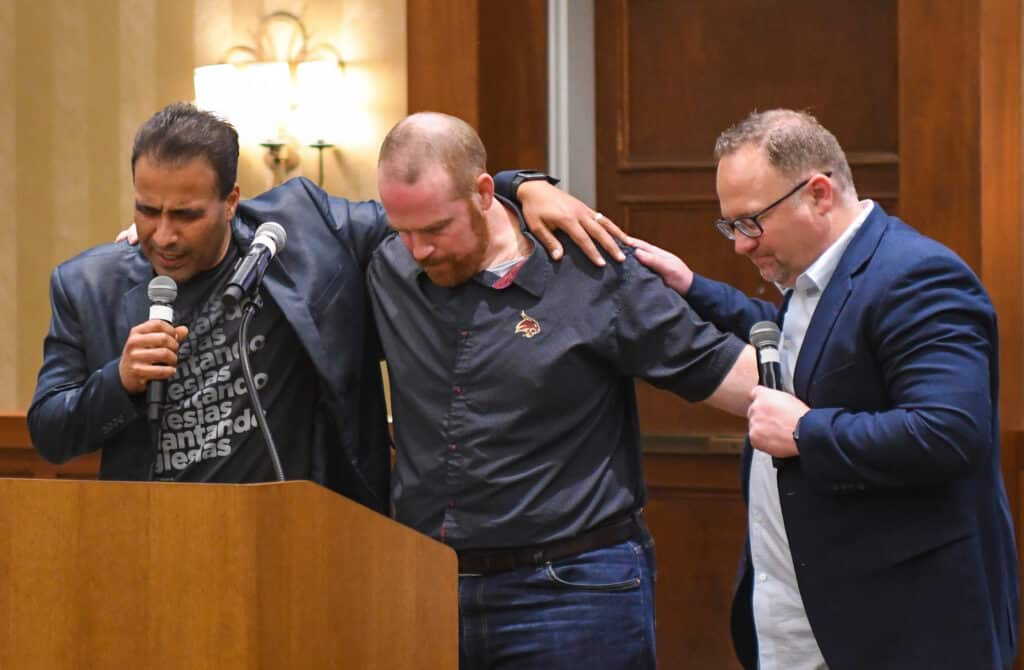In May 1900, everyone in Hot Springs, Ark., was hoping for tranquility. Barely a year had passed since this hotbed of organized crime and illegal gambling had erupted into an open gunfight between corrupt Hot Springs police officers and corrupt Garland County sheriff’s deputies. Arkansas Baptists and the Hot Springs city fathers somewhat nervously prayed that Bathhouse Row would put its best foot forward for the Baptists of the Southland.
The leadership of the SBC were saying their own prayers for peace, knowing that the Hot Springs meeting would feature an ambitious and potentially controversial set of historic proposals for the Southern Baptist Convention?the fruit of an entire year’s effort by a task force known as the “Committee on Observance of the Year 1900.”
Franklin H. Kerfoot was the public spokesman of the task force, reading a report recommending unprecedented interagency cooperation among associational, state, and national Southern Baptist entities in denominational fundraising.
This was not change for change’s sake. Southern Baptists faced serious fundraising problems in 1900. The coterie of Southern Baptist entities was young, growing, and in desperate need of money. In 1900 Southern Baptist entities were seeking those funds independently of one another?in competition with one another. A class of Southern Baptist employees emerged whose sole business was to solicit money from Southern Baptist churches and wealthy church members. The multiplication of institutions and agents meant that some churches were inundated with people seeking a Sunday to speak at the church and take up an offering. The resultant distribution of funds was haphazard rather than strategic, reflecting more the skill, lineage, and network of the employed agents than the spiritual importance of the institution. Some agents were authorized to keep for themselves the solicited funds until their own salaries had been funded. The activity of these agents tended to provoke resentment among Southern Baptists. Consider this passage that appeared in the Missouri Baptist Word & Way in early 1901 as a measure of Southern Baptist angst:
“Every observing person must recognize the advance of a dread commercialism which is eating like a [cancer] at the vitals of our generation. . . . We are coming to believe that there should be no agents going up and down the land whose sole business it is to get money. . . . Let our agents change front, and instead of seeking only the money of the Lord’s people, let that whole matter take the secondary and incidental place where it belongs, and make piety, consecration of life and property the great burden of their message.”
The birth of the Cooperative Program
The delegates at the Hot Springs meeting weren’t the only ones looking for a solution. The First Baptist Church in Murray, Ky., “began in 1900 a new approach to church finance. [H. Boyce] Taylor, pastor 1897-1931, avidly promoted this unified budget plan.” Taylor’s idea proved to be the solution to accomplish all of the star-studded task force’s goals.
Radical changes are difficult to make in a voluntaristic union, especially among a people zealous for local-church autonomy and sometimes peevishly resistant to demagoguery. The statesmen of the SBC in the early 1900s employed a process marked by careful patience and deliberate inclusiveness that is worthy of note. Before proposing a permanent structural change to the operations of the Southern Baptist Convention, the leadership of the SBC embarked upon a one-time trial run called the Seventy-Five Million Campaign.
The time period from the launch of the Seventy-Five Million Campaign to the adoption of the Cooperative Program was fully six years, from 1919 to 1925. These six years were filled with a truly inclusive and thoroughgoing effort to involve and inform every Southern Baptist of the benefits to be gained by moving to such a plan. Southern Baptist laypeople across the South enlisted to give “four-minute speeches,” mimicking a successful grassroots fundraising campaign by the United States Government during World War I. The theological basis of this decentralized approach, however, was much older than Liberty Bonds; the new Southern Baptist plan back in 1900 involved state conventions, district associations, and local churches as well as the national convention.
Both in its successes and its failures, the Seventy-Five Million Campaign was time well spent in determining the future path for the SBC. It succeeded in demonstrating that Southern Baptist entities were better off financially to join in cooperative fundraising than to continue in internecine solicitation rivalries. Yet the














